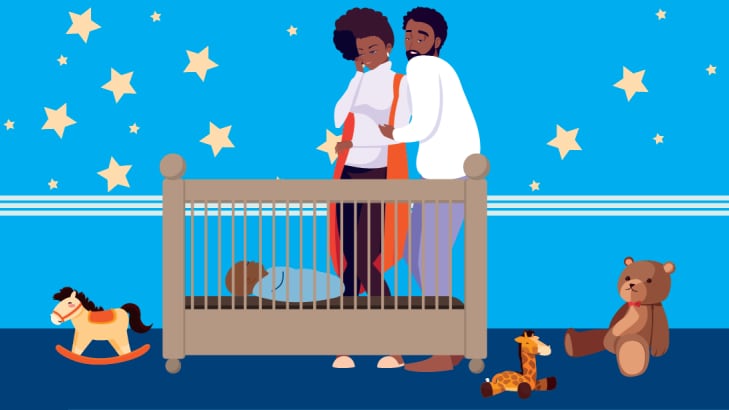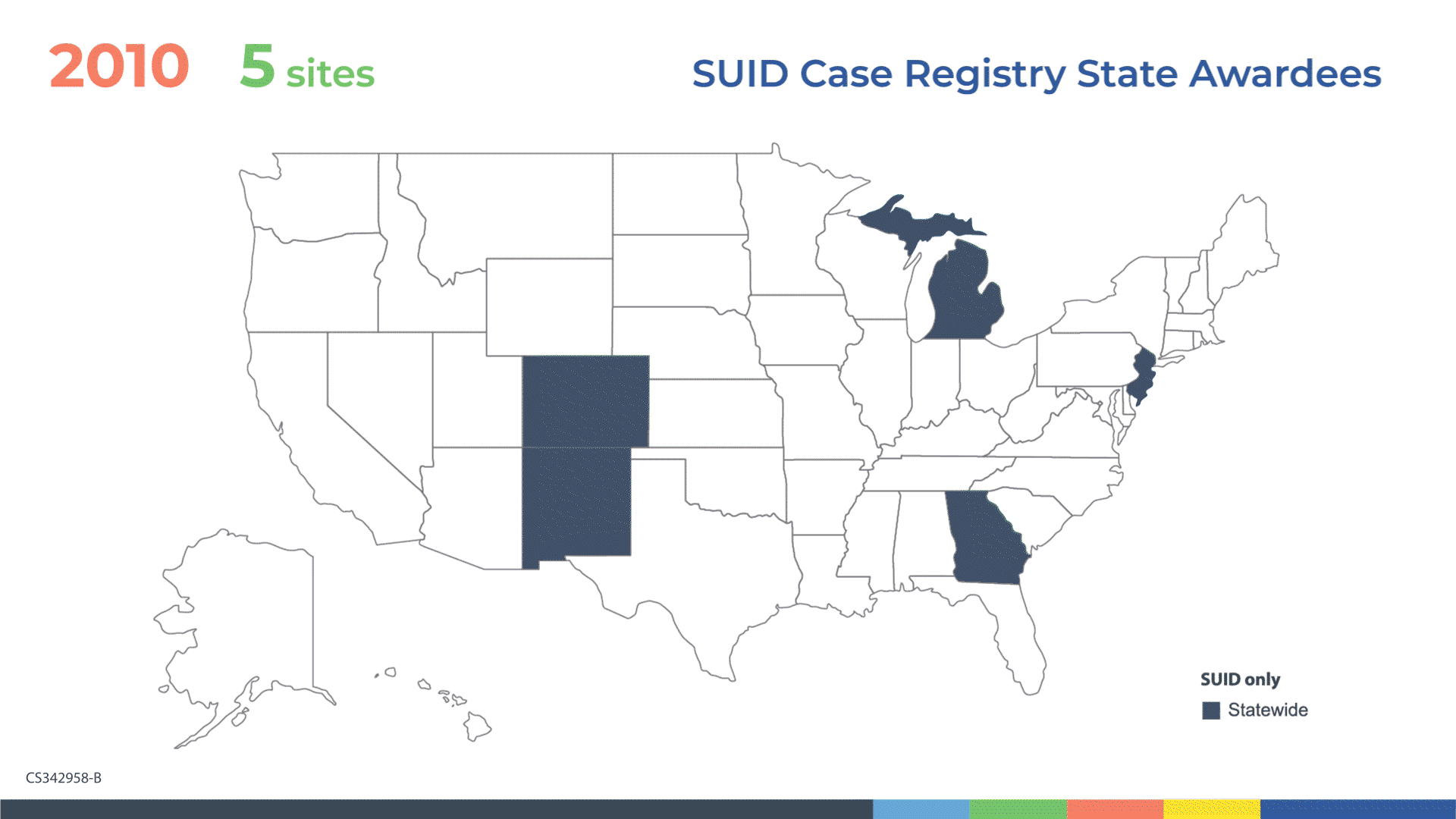At a glance
Expecting or caring for a baby? Take these steps to help baby sleep safely and reduce the risk of sleep-related infant deaths, including sudden infant death syndrome (SIDS) and accidental suffocation.
Background
During the first few months of their baby’s life, parents can feel exhausted. Newborns wake up every few hours to feed, whether it’s day or night. Sleep deprivation can be very challenging for parents of babies. Parents may take comfort in knowing that sleepless nights are temporary and helping their baby sleep safely can make a difference that lasts a lifetime.
There were about 3,700 sleep-related deaths among U.S. babies in 2022. CDC supports the recommendations issued by the American Academy of Pediatrics (AAP) to reduce the risk of all sleep-related infant deaths. See How to Keep Your Sleeping Baby Safe: AAP Policy Explained to learn more about these and other actions.
Parents and caregivers can help create a safe sleep area for babies by taking the following steps.
How to create a safe sleep area

Place your baby on his or her back for all sleep times—naps and at night.
If a baby spits up during sleep, babies' anatomy and gag reflex help prevent them from choking. This is true even while baby is sleeping on their back. Babies who sleep on their backs are much less likely to die of SIDS than babies who sleep on their sides or stomachs.
Use a firm, flat (not at an angle or inclined) sleep surface, such as a mattress in a safety-approved crib covered only by a fitted sheet.
Parents and caretakers might feel they should place their baby on a soft surface to help with sleep. Many even feel that the baby will be more comfortable. However, soft surfaces can increase the risk of sleep-related death. A firm sleep surface helps reduce the risk of SIDS and suffocation.
Keep your baby's sleep area (for example, a crib or bassinet) in the same room where you sleep, ideally until your baby is at least 6 months old.
Accidental suffocation or strangulation can happen when a baby is sleeping in an adult bed or other unsafe sleep surfaces.
Sharing a room with your baby may decrease the risk of SIDS by as much as 50% and is safer than bed sharing. A report found that not room sharing increased the chance of sleep-related suffocation by more than 18 times compared to room sharing with a parent or caregiver. Placing the crib close to your bed so that the baby is within view can make it easier to monitor your baby. Having them in reach can also help make it easier to feed and comfort them.
Keep soft bedding such as blankets, pillows, bumper pads, and soft toys out of your baby's sleep area. Additionally, do not cover your baby's head or allow your baby to get too hot.
Parents may feel they should add sheets or blankets to their baby's crib to keep their baby warm and comfortable. However, a report found that babies who slept on soft bedding like sheets, comforters, and blankets increased the chance of sleep-related suffocation by 16 times compared with babies who did not sleep on soft bedding.
If you're worried about your baby getting cold during sleep, you can dress them in sleep clothing. Options like a wearable blanket, also known as a sleep sack, are a safe alternative.
Products labeled as weighted—including weighted sleepers, swaddles, sleep sacks, and blankets—are not safe for infants.
Learn how to create a safe sleep environment for baby in your home by exploring an Interactive Safe Sleep Environment Tool from Safe to Sleep®.
CDC Activities to Address Sleep-Related Infant Deaths
CDC’s Division of Reproductive Health (DRH) supports the Sudden Unexpected Infant Death (SUID) and Sudden Death in the Young (SDY) Case Registry in 32 sites. Participating sites can use data about trends and risk factors to develop strategies to reduce future deaths. The maps below show how the number of participating sites has grown from 2010 to 2024.

